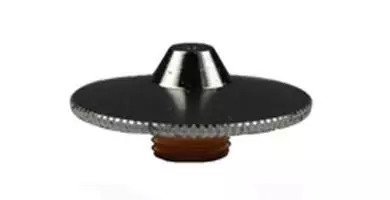In this blog, we'll explore why these parts are essential for your laser-cutting machine and why they should be at the top of your list regarding replacement parts.
Benefits of Using Trumpf Parts
- They are made to last. They are built with precision and care to meet the highest industry standards, so you can rely on them to provide long-term performance and savings.
- High-quality parts can reduce the risk of breakdowns or wear and tear on your laser-cutting machine. This can save you time and money on repairs or replacements in the long run.
- Trumpf parts are designed to optimize the performance of your laser-cutting machine. For example, Trumpf nozzles are designed to optimize gas flow and reduce the risk of overheating, which can lead to more precise and efficient cuts.
- Trumpf nozzles can help your laser-cutting machine operate at optimal temperatures, leading to more consistent and efficient cuts.
- Trumpf lenses and mirrors are made with high-quality materials and coatings to minimize distortion and improve laser beam quality. This can result in more accurate and consistent cuts from your laser cutting machine, improving the quality of your finished products.
Overview of Trumpf Spare Parts
In addition to their standard parts, Trumpf offers a wide range of spare parts for their laser cutting machines. These spare parts are designed to replace worn or damaged parts quickly and easily, minimizing downtime and keeping your machine running smoothly.Some of the most common Trumpf spare parts include nozzles, lenses, and mirrors, which we mentioned earlier. Other spare parts may include gas filters, cooling units, and other components essential to your machine's operation.
Tips for Maintaining Trumpf Parts
Ensure that your Trumpf and spare parts last as long as possible and provide optimal performance. Here are some tips for maintaining them:- Regular cleaning: Make sure to clean them regularly to remove debris and other contaminants that can interfere with their performance. Follow the manufacturer's instructions for cleaning, and be sure to use the right cleaning solution for each part.
- Inspection: Regularly inspect your Trumpf parts for signs of wear or damage, such as cracks or chips. If you notice any issues, it's important to replace the part as soon as possible to prevent further damage to your machine.
- Replacement: When replacing a Trumpf part, use a genuine Trumpf part or spare part. Using inferior parts can lead to reduced performance and increased risk of damage or breakdowns.
Conclusion
Trumpf parts are essential for maintaining the performance and longevity of your laser-cutting machine. They are made with precision and care to ensure optimal performance and are designed to be easy to replace when necessary.If you need to purchase Trumpf or spare parts for your machine, consider checking out Altparts. We offer a wide selection of genuine Trumpf spare parts and spare parts at competitive prices, making it easy to keep your machine running smoothly for years.
Remember, investing in high-quality parts now can save you time, money, and frustration down the road!

